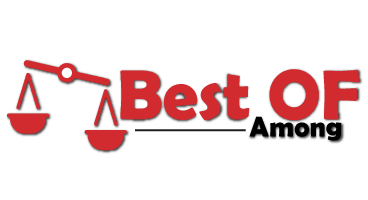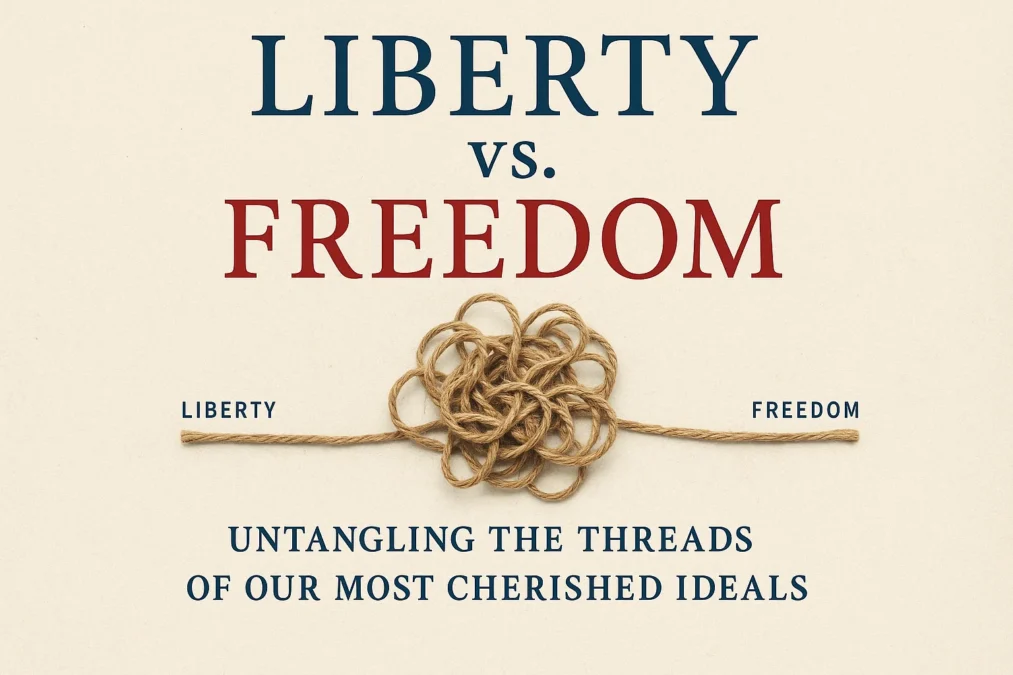We throw these words around constantly. Politicians promise to defend them. Activists march for them. We feel a deep, innate desire for them. Liberty and freedom. At first glance, they seem like perfect synonyms, interchangeable terms for the same beautiful concept of being unshackled. We speak of the “sweet land of liberty” and the “cause of freedom” with equal passion. But are they truly the same?
Dig a little deeper, and you discover a fascinating and crucial distinction. Understanding the subtle, yet powerful, difference between liberty and freedom isn’t just an academic exercise for philosophers. It’s a key that unlocks a deeper comprehension of politics, law, history, and our own personal lives. This exploration takes us to the heart of what it means to live in a society, to have rights, and to exercise responsibility. It forces us to ask: are we truly autonomous individuals, or are our choices always framed by the structures we live within? The conversation between these two ideas has shaped nations and ignited revolutions. By exploring liberty vs freedom, we begin to see the blueprint of our social contract.
This article will journey through the philosophical foundations, legal interpretations, and modern-day manifestations of these twin pillars of human dignity. We will see how freedom is the vast, open sky of possibility, and how liberty is the structured vessel that allows us to navigate that sky safely and purposefully. We will examine how this dynamic plays out in our digital world, in our economic systems, and in the very fabric of our daily interactions. So, let’s begin the work of untangling these threads, to better appreciate the intricate tapestry of a life lived without undue constraint.
The Philosophical Foundations of Liberty and Freedom
To truly grasp the modern implications of the liberty vs freedom discussion, we must first travel back in time to the minds that first wrestled with these concepts. Ancient philosophers, particularly in Greece and Rome, laid the groundwork, but it was during the Enlightenment that the ideas truly crystallized into the forms we recognize today. These thinkers weren’t just pondering abstract ideas; they were trying to design a better way for humans to coexist, and the liberty vs freedom distinction was central to that project.
For the ancient Greeks, the concept of freedom was deeply tied to the city-state, or polis. To be free was to have the right to participate in the political life of your community. This was not an individualistic freedom to do whatever one pleased, but a collective liberty to be part of self-governance. Aristotle famously considered humans “political animals,” suggesting that our full potential is realized only within a political community that guarantees certain rights and liberties. This ancient view leans more towards what we would now call “liberty” – a freedom defined and protected by a social and legal structure. The Roman Republic expanded on this, codifying laws that created a space for personal autonomy and legal rights for its citizens, a system of ordered liberty that would inspire generations to come.
The Enlightenment era, however, is where the liberty vs freedom debate truly ignited. Thinkers like John Locke argued that individuals possess natural rights to life, liberty, and property, which exist prior to the formation of any government. In this view, freedom is the inherent, birthright state of humanity. Liberty, then, becomes the practical manifestation of that freedom within a civil society. Locke’s social contract theory proposed that people willingly give up a small portion of their absolute freedom to a governing authority in exchange for the protection of their most essential liberties. This was a revolutionary idea: government wasn’t a master, but a servant created to safeguard pre-existing rights. Shortly after, Jean-Jacques Rousseau offered a different take with his concept of the “general will,” where true liberty is found not in individual isolation, but in submitting to the collective will of the people, which represents the common good. This highlighted a tension that persists to this day: is liberty about protection from the group, or fulfillment through the group?
Defining the Indefinable: Core Meanings of Freedom and Liberty
While philosophy gives us the historical context, we need clear, working definitions to navigate the modern usage of these terms. The words “liberty” and “freedom” are often used interchangeably in everyday conversation, and that’s perfectly acceptable. However, in political science, law, and philosophy, a nuanced distinction has emerged that provides incredible clarity. This distinction frames freedom as the internal, subjective state of being, and liberty as the external, objective framework that makes that state possible.
Freedom is most accurately understood as the innate, personal capacity for self-determination and autonomy. It is the absence of internal or external coercion on your will. Freedom is the state of being free from something—oppression, slavery, constraint, or limitation. It is a broad, sweeping concept that speaks to the human spirit’s desire to be its own master. When we talk about “freedom of thought” or “feeling free,” we are tapping into this definition. It is the raw, unbounded potential of choice. It is the power to act, speak, or think without externally imposed restraints. This is why the cry for freedom is so powerful in revolutions; it is a primal demand to throw off shackles, both literal and metaphorical.
Liberty, by contrast, is often defined as the state of being free within society from oppressive restrictions imposed by authority on one’s way of life, behavior, or political views. It is the presence of legally guaranteed, socially constructed rights. Liberty is freedom that has been institutionalized and codified. It’s not just the absence of restraint, but the presence of protected space to exercise your rights. When we talk about “civil liberties,” such as the liberty of the press, the free exercise of religion, or the right to a fair trial, we are referring to specific, legally defined freedoms that are enshrined in a constitution or bill of rights. Liberty is the architecture that prevents freedom from descending into chaos. It creates the lanes on the highway so that everyone’s freedom of movement doesn’t result in a catastrophic collision. The ongoing discourse on liberty vs freedom is essentially about balancing this raw potential with the necessary structures for a functional society.
The Legal and Political Frameworks of Liberty
If freedom is the dream, then liberty is the blueprint. Nowhere is the distinction between liberty vs freedom more concrete and consequential than in the realm of law and politics. This is where abstract ideas are hammered into legal statutes, constitutional amendments, and court rulings that directly govern our lives. The entire structure of a constitutional republic, like the United States, is an experiment in converting the philosophical concept of freedom into the practical reality of protected liberty.
The U.S. Constitution and its Bill of Rights are perhaps the most famous examples of this translation. The First Amendment doesn’t grant freedom of speech; it explicitly prohibits Congress from making laws that abridge it. This is a critical distinction. The philosophical assumption is that the freedom to speak your mind is a pre-existing, natural right. The Constitution’s role is to secure the liberty of speech by legally restraining the government’s power to infringe upon it. This framework of negative liberty—liberty as freedom from government interference—is a cornerstone of American political philosophy. It creates a sphere of individual autonomy where the state cannot tread. Other amendments secure liberties like the right to bear arms, protection from unreasonable searches and seizures, and the right to due process, all designed to create a buffer between the individual and the potential tyranny of the majority or the state.
This legalistic view of liberty vs freedom extends to the concept of civil liberties versus civil rights. Civil liberties are these fundamental, negative freedoms protected from government action. Civil rights, on the other hand, are the positive actions a government must take to ensure equal treatment and prevent discrimination by other actors within society. The right to vote is a civil liberty protected from government denial; the Civil Rights Act of 1964 enforces a civil right to be free from discrimination in public accommodations by private businesses. This shows how the concept of liberty evolves, requiring the government to sometimes act to create the conditions for genuine freedom to be experienced by all. The legal system is the constant arena where the boundaries of these liberties are tested, debated, and redefined, making the understanding of liberty vs freedom not just an intellectual pursuit, but a civic duty.
The Personal and Societal Experience of Freedom
Beyond the courtrooms and legislative halls, the concepts of liberty and freedom play out in the intimate theater of our personal lives and the broader stage of societal dynamics. How we experience these ideals is deeply personal and culturally specific. The internal feeling of freedom and the external reality of our liberties are in constant dialogue, shaping our identity, our choices, and our relationships with others.
Assault vs Battery: Untangling the Legal Knot You Thought You Understood
On a personal level, freedom is a state of mind. It’s the feeling you get when you break a bad habit, leave a toxic relationship, or finally speak your truth. It’s the autonomy to define your own values, chart your own life course, and take responsibility for your own successes and failures. This psychological freedom is the foundation of self-esteem and personal fulfillment. However, this personal freedom is always exercised within a social context. Your freedom to play loud music at 3 a.m. directly impacts your neighbor’s liberty to the quiet enjoyment of their home. This is where the societal concept of liberty comes in, creating the rules of the game. Societal norms, laws, and expectations are the structures of liberty that mediate between your personal freedom and everyone else’s. They are the agreed-upon boundaries that prevent the “state of nature,” where the strongest individual’s freedom reigns supreme, from becoming a reality.
This interplay creates a fascinating dynamic in how different societies prioritize these values. A society with a strong emphasis on collectivism might prioritize social harmony and order, framing liberty as the freedom to contribute to and benefit from the group’s well-being. In such cultures, individual expressions of freedom that disrupt the collective might be frowned upon. Conversely, a highly individualistic society, like the United States, often champions personal freedom above all, viewing liberty primarily as protection from collective or governmental overreach. The constant tension in these societies is between the desire for maximum individual autonomy and the need for social cohesion and a safety net. The balance between liberty vs freedom is therefore never static; it is a perpetual negotiation, a pendulum that swings with the times, reflecting our evolving understanding of what it means to live a good life, both alone and together.
The Modern Battlegrounds: Liberty vs Freedom in the 21st Century
The digital age has not made the liberty vs freedom discussion obsolete; it has catapulted it into new and complex territories. The old frameworks, designed for a physical world, are being stress-tested by technologies that transcend borders and create new forms of community, commerce, and control. The core questions remain the same, but the battlefield has shifted to cyberspace, economic policy, and public health, forcing us to re-evaluate what these cherished ideals mean today.
In the digital realm, the concept of freedom is often invoked in the context of a “free and open internet.” This is the idea that information should flow without censorship, that individuals should have the freedom to create, share, and access content without gatekeepers. This is the modern expression of freedom of speech and expression. However, this expansive freedom collides with the need for digital liberty—the legally protected right to privacy, data security, and protection from online harassment, fraud, and misinformation. How do we balance the freedom of a tech giant to collect data with an individual’s liberty to control their personal information? How do we protect the liberty of citizens from foreign cyber-attacks or domestic digital surveillance while preserving their freedom to communicate privately? These are the modern incarnations of the age-old liberty vs freedom dilemma, and we are still writing the rulebook.
Similarly, the realm of economics is a hotly contested space for this debate. Economic freedom can be defined as the ability to participate in the market, start a business, and choose one’s employment without undue interference. This is a core tenet of capitalist societies. Economic liberty, on the other hand, often refers to the legal and social structures that ensure this freedom is fair and accessible—things like contract law, property rights, and regulations that prevent monopolies and fraud. The debate often centers on the degree of regulation needed. Is heavy regulation an infringement on economic freedom, or is it a necessary structure to ensure the economic liberty of the vulnerable? The COVID-19 pandemic introduced another layer, pitting the personal freedom to refuse a mask or vaccine against the collective liberty to public health and safety. These modern challenges prove that the tension between unrestrained freedom and structured liberty is not a historical relic, but a living, breathing conflict that defines our present and will shape our future.
A Comparative Look: Key Differences at a Glance
To help crystallize the concepts we’ve explored, the following table provides a side-by-side comparison of the key characteristics of liberty and freedom, highlighting their core differences in a clear, concise manner.
| Aspect | Freedom | Liberty |
|---|---|---|
| Core Nature | An innate, natural state of being; a philosophical concept. | A social and political construct; a legal guarantee. |
| Primary Focus | Internal autonomy and the absence of coercion (“free from”). | External rights and the presence of protected space (“free to”). |
| Source | Inherent in the individual (often considered a natural right). | Granted, protected, and defined by a social contract, laws, or a constitution. |
| Scope | Broad, universal, and often abstract. | Specific, contextual, and legally defined (e.g., civil liberties). |
| Relationship with Others | Can exist in isolation; potentially anarchic without structure. | Inherently social; defines the relationship between the individual and the group/state. |
| Key Example | The feeling of liberation after leaving a job. | The First Amendment right to practice your religion without government persecution. |
Voices Through Time: Quotes on Liberty and Freedom
The exploration of liberty vs freedom has captivated some of the greatest minds in history. Their words provide powerful, succinct insights into the nuances of these concepts and their enduring importance to the human condition.
“Freedom is the will to be responsible to ourselves.” – Friedrich Nietzsche
This quote brilliantly captures the internal, demanding nature of true freedom. It’s not just a release from external control, but a challenging call to self-determination and ownership of one’s choices.
“Liberty is the right to do what the law permits.” – Baron de Montesquieu
A classic Enlightenment perspective that squarely defines liberty as a product of the legal and political system. It emphasizes that liberty is not limitless, but exists within a framework designed for societal order.
“Those who deny freedom to others deserve it not for themselves.” – Abraham Lincoln
Lincoln’s words highlight the social and ethical dimension of the liberty vs freedom dynamic. It suggests that the legitimacy of one’s own freedom is contingent on respecting the liberty of others.
“The most difficult thing to govern is the heart. Without liberty of the heart, there is no true liberty.” – Fyodor Dostoevsky
Dostoevsky points to the profound inner world of freedom, arguing that all external liberties are meaningless without the internal freedom of conscience and spirit.
“Freedom is never more than one generation away from extinction.” – Ronald Reagan
A stark reminder that both freedom and liberty are not permanent guarantees. They require constant vigilance, understanding, and active participation from each new generation to be preserved.
Conclusion: The Enduring Dance of Two Essential Ideals
Our journey through the intricate landscape of liberty vs freedom reveals that these are not two opposing forces, but rather two complementary and essential partners in the project of human civilization. They exist in a dynamic, symbiotic relationship, each giving meaning and context to the other. Freedom is the raw material of human potential—the boundless energy, the desire for autonomy, the spark of self-will. Liberty is the architecture that channels that energy, giving it form, direction, and safety so that it can be expressed without destroying the shared space we all inhabit.
To prioritize one completely over the other leads to a distorted and unstable society. A world with only freedom, without the structure of liberty, descends into a chaotic state where the strongest and most ruthless impose their will on everyone else. It is a world without guaranteed rights, without due process, and without lasting security. Conversely, a world with only liberty, conceived as a rigid set of permissions and restrictions without the animating spirit of personal freedom, becomes a sterile, authoritarian cage. It may be orderly, but it lacks creativity, passion, and the very human drive for self-expression that leads to progress and fulfillment.
The true goal, then, is not to declare a winner in the contest of liberty vs freedom. The goal is to seek a wise and enduring balance. It is to build a society that provides the maximum degree of personal freedom while ensuring the necessary liberties that protect the weak from the strong and create a common ground for all to thrive. This balance is never perfectly achieved; it is a perpetual aspiration, a constant negotiation reflected in our laws, our political debates, and our personal choices. Understanding the subtle yet profound difference between these two concepts empowers us to be better citizens, more thoughtful participants in public life, and more intentional architects of our own destinies. It is in the enduring dance between liberty and freedom that human dignity finds its most complete and vibrant expression.
Frequently Asked Questions
What is the simplest way to explain the difference between liberty and freedom?
Think of freedom as the open, vast ocean. It represents your innate potential and desire to go anywhere and do anything. Liberty is the well-built ship and the navigational rules—like maritime laws and lighthouses—that allow you to sail that ocean safely, without crashing into other vessels or running aground. Freedom is the “what,” the raw possibility; liberty is the “how,” the structured and protected way to exercise that possibility within a society.
Can you have liberty without freedom?
This is a complex philosophical question, but generally, it’s difficult to have a meaningful experience of liberty without an underlying sense of freedom. If you live in a society with a constitution that grants many liberties (like freedom of speech and assembly) but you are internally oppressed by fear, propaganda, or a lack of education, you may not feel psychologically free to exercise those liberties. The external structure exists, but the internal capacity to use it is diminished. In this sense, liberty can feel hollow without the personal freedom and courage to activate it.
Why is the distinction between liberty and freedom important in law?
The distinction is crucial in law because precision matters. Laws are designed to protect specific, definable rights (liberties), not vague feelings. When a court interprets the First Amendment, it is defining the scope of your liberty to free speech—what kinds of speech are protected, when, and from whom. Using “freedom” in a legal context could be too broad and open to interpretation. The concept of liberty provides the legal framework that turns the abstract ideal of freedom into an enforceable, defensible right that can be consistently applied.
How does the government protect liberty but not necessarily grant freedom?
This gets to the heart of the social contract. The philosophical view, particularly from thinkers like John Locke, is that freedom is a natural right you are born with. A government does not grant you this freedom; it exists inherently. What a government does is protect your liberty by creating laws and a justice system that prevent others (including the government itself) from infringing upon your fundamental freedoms. For example, the government doesn’t give you the freedom to think; it protects your liberty by ensuring you won’t be punished for your thoughts.
In the context of ‘liberty vs freedom’, which is more important for a healthy society?
A healthy society requires both, acting in balance. An overemphasis on freedom at the expense of liberty leads to chaos and the “tyranny of the strong.” An overemphasis on liberty at the expense of personal freedom leads to authoritarianism and stagnation. The most resilient and flourishing societies are those that champion the personal freedom of their citizens to innovate, create, and live authentically, while simultaneously maintaining a robust framework of liberty—the rule of law, protected civil rights, and democratic institutions—that ensures that freedom is exercised responsibly and justly for the benefit of all.



